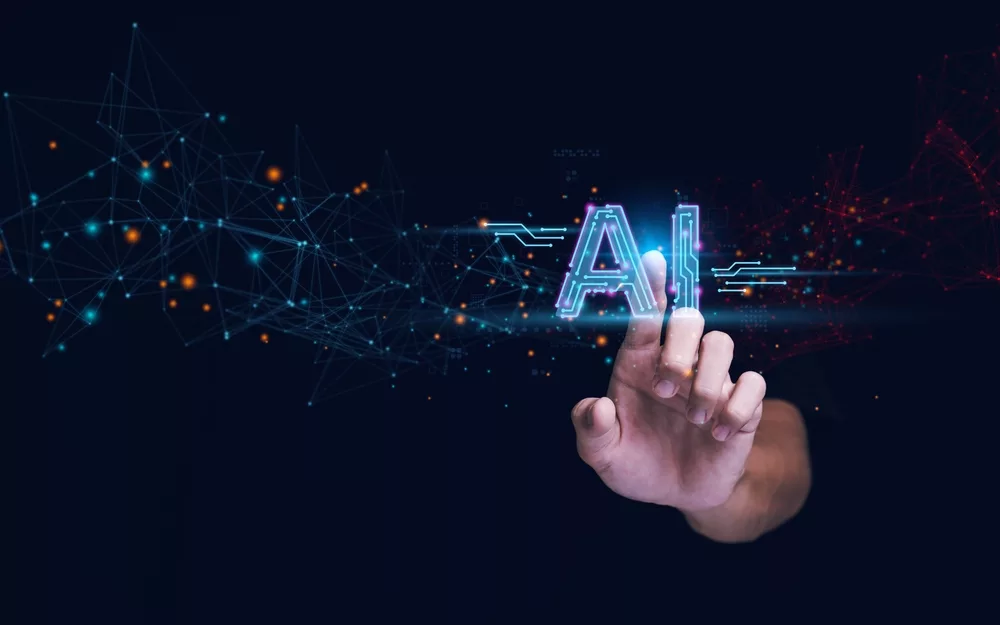As AI integration within enterprise technology gains momentum, it creates a variety of perspectives, showing both the promises and challenges that come with this technological evolution. From discussions on decision intelligence to insights on preparing employees for generative AI, the debate on AI in the enterprise has shifted from “if” to “when.” The articles below highlight the progress enterprises are making when approaching AI adoption thoughtfully, and considering its implications for productivity, culture, and individual well-being.
AI-Powered Decision Making: Its Impact On The Enterprise Value Chain – Forbes
“The reality is people lack the time, capacity, visibility and technology to make the best decisions at the right moment in time. In fact, a recent IDC study sponsored by my company revealed that 25% of decisions that should be made are not being made due to operational challenges with data, analytics and AI. The study also proposed that companies must now move from asking “What data do we need?” to “What decisions do we need to make?”
This is where decision intelligence—the ability to digitize and automate decision-making—provides massive value: adding an intelligent engine to existing solutions and data sources for improved, accelerated decision-making.”
How to use AI in the workplace? Ask HR – USA Today
“Absolutely, it’s crucial to communicate with your boss about your use of generative AI tools like ChatGPT for work, even if there isn’t a formal AI policy in place at your workplace…
Ultimately, artificial intelligence should complement and elevate human intelligence and capability, not replace it. Ensuring your uniquely human intellect and intuition are involved in an operation aided by AI will deliver the best possible outcome. By addressing these considerations and having an open conversation with your boss, you not only ensure transparency in your work but also contribute to the ongoing dialogue around AI usage in your workplace. Your proactive approach could even help shape a future AI policy to suit your company’s needs and values.”
AI could make the four-day workweek inevitable – BBC
“While AI tools are certainly paving the way for a four-day work week within some industries, the technology can’t usher in the change alone. Organizational culture within a business is also fundamental, says Na Fu, a professor in human resource management at Trinity Business School, Ireland. “An openness to innovative work structures, an experimental mindset and, importantly, a culture grounded in high levels of trust are all important for the four-day work week to be successfully adopted,” she says.”
How to prepare your employees for generative AI in the workplace – TechRadar
“To realize the full benefits of generative AI, business leaders must empower everyone within their workforce to use the technology safely and effectively. This means building a culture of knowledge, understanding and responsibility towards AI. Before rolling out formal training, businesses should consider how they can protect their intellectual property and their employees from the risks associated with generative AI.
Allowing wide use of public AI applications such as ChatGPT comes with significant risks as all data fed into their algorithms is publicly accessible, which can expose sensitive customer data and business trade secrets to the prying eyes of malicious actors or your competitors. To mitigate those risks, organizations should consider a private AI model, which means all the data, AI algorithms, and IT infrastructure are fully controlled within the business.”
AI in the workplace, and a defense of busywork – The Verge
“Mark told me my questions about an AI future raise a specific concern for her. ‘If people are going to be saddled with all this complex work because we’re being relieved of doing lighter work, then this can lead to burnout,’ she said. ‘We just have very limited cognitive resources, and you can’t just do all this tough work without relieving yourself. And in a sense, I think busywork, even though it may not make us happy, is a way to relieve this cognitive load, because we’re doing things that don’t require a lot of thought.’ (A lawyer told me that his kind refer to the time-consuming task of document review as ‘chillable billables.’)
Ideally, we would decompress from focused interludes with more obviously relaxing rote ‘work’ such as puzzles or knitting. But pausing throughout the day to knit is not realistic for most workers. Populating a spreadsheet may be the closest thing we have to leisure.
Danielle Li, an associate professor at the MIT Sloan School of Management and a co-author of a paper called ‘Generative AI at Work,’ said she finds busywork soothing in part because it catapults her into a ‘flow state,’ but also because it allows her to keep up the performance of work while resting her mind. Li acknowledges that this is not ‘good,’ per se. ‘If I didn’t feel the need to be working all the time, then I wouldn’t value that particular aspect of busywork. With busywork I can tell myself, ‘Yay, I’m working.’ ‘You’re earning your place in this world.’ But you’re not actually trying that hard.’”
We must start preparing the US workforce for the effects of AI – now – The Guardian
“Many corporations gather information about their employees through webcams, keyboards, internet activity and phone logs, and that can include private information about workers’ political opinions, sexual orientation, union activity and even their emotions and mental state. Inside many call centers, AI tools monitor the calls that agents make, and based on factors like the agent’s or customer’s tone of voice, those tools often send messages to an agent’s computer, directing them to talk with more empathy or energy.
And then there are the forecasts that AI will wipe out millions of jobs. The McKinsey Global Institute estimates that by 2030, tasks that account for up to 30% of the hours now worked across the US could be automated, and that AI will push 12 million American workers out of their jobs. Goldman Sachs predicts that AI will disrupt 300m jobs worldwide by 2030.”
A guide to artificial intelligence in the enterprise – TechTarget
“AI and big data play a symbiotic role in 21st-century business success. Large data sets, including a combination of structured, unstructured and semistructured data, are the raw material for yielding the in-depth business intelligence and analytics that drive improvements in existing business operations and lead to new business opportunities. Companies cannot capitalize on these vast data stores, however, without the help of AI. For example, deep learning processes large sets of data to identify subtle patterns and correlations that can give companies a competitive edge.
Simultaneously, AI relies on big data for training and generating insights. AI’s ability to make meaningful predictions — to get at the truth of a matter rather than mimic human biases — requires not only vast stores of data but also data of high quality. Cloud computing environments have helped enable AI applications by providing the computational power needed to process and manage the required data in a scalable and flexible architecture. In addition, the cloud provides wider access to enterprise users, democratizing AI capabilities.”
The year’s top 10 enterprise AI trends — so far – CIO
“Last year, AI consisted of point solutions and niche applications that used ML to predict behaviors, find patterns, and spot anomalies in carefully curated data sets. Today’s foundational models are jacks-of-all-trades. They can code, write poetry, draw in any art style, create PowerPoint slides and website mockups, write marketing copy and emails, and find new vulnerabilities in software and plot holes in unpublished novels.
“Generative AI touches every aspect of the enterprise, and every aspect of society,” says Bret Greenstein, partner and leader of the gen AI go-to-market strategy at PricewaterhouseCoopers. “With a pre-trained model, you can bring it into HR, finance, IT, customer service—all of us are touched by it.”
The potentials for increasing productivity or for enabling types of business not possible before are huge. But there’s also the downside: the possibility gen AI will take companies down. The phrase “existential risk” is now everywhere—not in the sense the AI would destroy humanity, but that it would make business functions, or even entire companies, obsolete.”
When it comes to generative AI in the enterprise, CIOs are taking it slow – TechCrunch
“I think it’s undeniable that enterprise employees, who are the internal customers of the CIO or CTO, have all tried ChatGPT and they know what amazing looks like. They know where it’s early, and they know where it’s inspiring, and for lack of a better word, where they see greatness. And so CIOs are under pressure to deliver that level,” Turow told TechCrunch.
It has created a tension between this desire to please the internal customers, especially when some of that pressure could be coming from the CEO, and a CIO’s natural tendency to move cautiously, even with something as potentially transformative as generative AI. That’s going to take setting up some structure and organization around how this gets implemented over time, says Jim Rowan, principal at Deloitte, who is working with clients around how to build generative AI across companies in an organized fashion.”
Generative AI Unleashed: Charting The Enterprise Future – Forbes
“Generative AI is disrupting technology and changing the world. It is a category of artificial intelligence models that can produce novel, high-quality data like text, computer code, images, or other content given just a text or visual prompt.
Asif Hasan, Co-founder & President at Quantiphi, a leading player in the AI-First Digital Engineering provides a future-oriented perspective: “We believe that the industry will evolve into an AI ecosystem with two types of players setting the pace of innovation. There will be leading companies like Google, Microsoft, OpenAI, NVIDIA, and others defining the state of the art with frontier models. Additionally, a vibrant open-source community and academic research institutions will constantly challenge the state of the art with rapid innovation.”
Progress in generative AI has been remarkable, with capabilities expanding exponentially year over year. This is a pivotal inflection point in technological history, and the possibilities for generative AI are endless.”
***Guest post from FischTank PR interns Aimee Jean, Ella Perini and Jamie Steinberger.***
Looking for a PR partner with experience working with enterprise technology and AI companies to support industry visibility and media presence for product awareness and thought leadership?
FischTank PR works with enterprise and AI companies across B2B Tech, helping them achieve various communications and public relations strategies designed to boost their business and generate awareness for brand and executive voices. If you’re looking for a PR firm with great industry understanding and a results-oriented approach to media relations, please contact us at [email protected].




